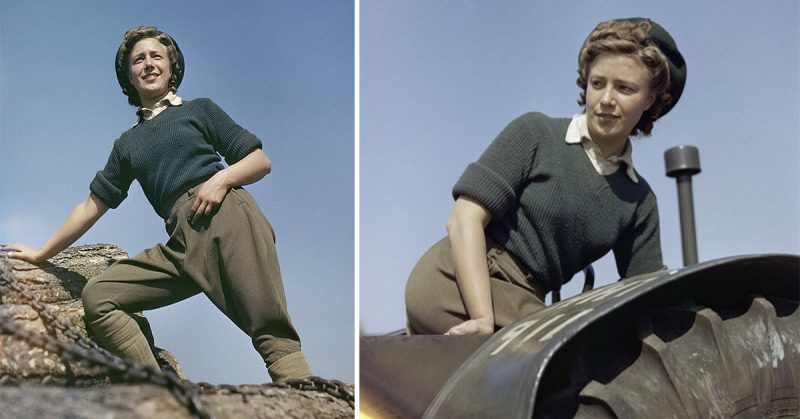While Lumber Jills received better compensation than their counterparts in the Women’s Land Army, it was not possible for them to quit after starting.
The Women’s Timber Corps was founded in 1942 to provide the UK with timber. Known as “Lumber Jills,” these women produced the timber necessary for telegraph poles, rails used in the D-Day invasions, and coal mine support beams.
The Home Grown Timber Production Department organized for the women to work in the timber industry to replace the men drafted into the armed forces. They were essentially the British equivalent of America’s Rosie the Riveter.
At the war’s height there were 6,000 women working in the Timber Corps, many from cities who had previously worked as dressmakers, shop assistants, and factory workers. These urbanites proved to be just as efficient with an axe as their rural peers. In fact, there is no evidence suggesting that recruitment for the corps was based on physical ability. Rather, the corps sought women with “enthusiasm, resilience and good humor.”
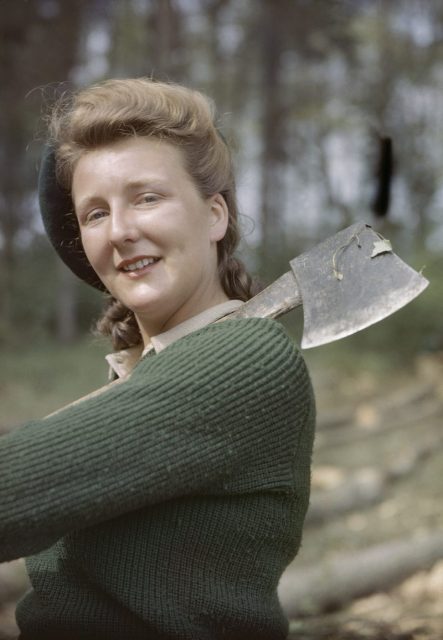
The Timber Corps was part of the Women’s Land Army which at its peak had 80,000 women on its roster. The Women’s Land Army was formed during the First World War with the aim of reducing the UK’s reliance on imports. The women helped at dairy farms, plowed fields, and sheared sheep.
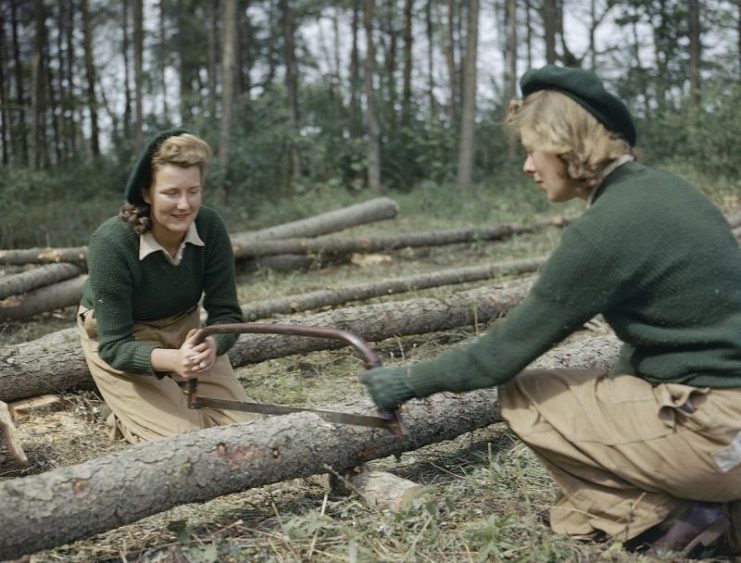
The Women’s Land Army was restarted in 1939, just three months before the UK declared war on Germany. The Timber Corps was formed later in 1942 since the male timber workers were among the last to get drafted into service.
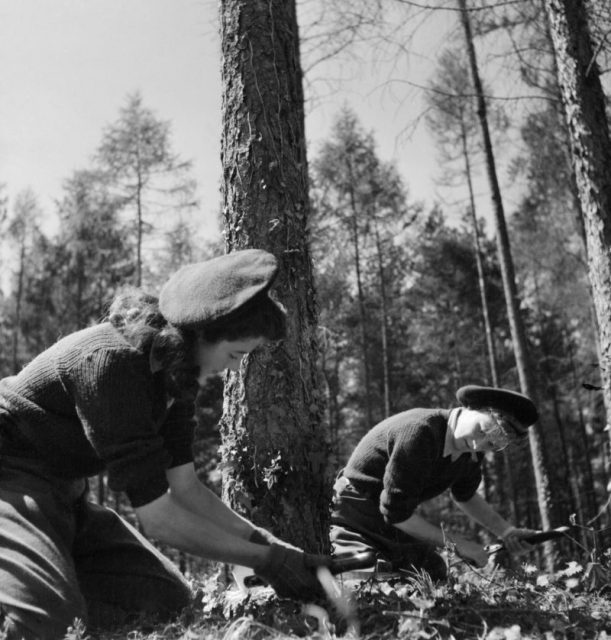
The press advertised working in the Timber Corps as a way for women to escape the city for a country vacation, showing pictures of bare-armed women in trousers enjoying the sunshine. The press didn’t mention the conditions, such as working at night in the dead of winter, fingers amputated by saws, bronchitis caused by saw dust inhalation, or the women crushed by trees falling in unanticipated directions.
While Lumber Jills received better compensation than their counterparts in the Women’s Land Army, it was not possible for them to quit after starting. In some ways, they were treated similarly to the prisoners of war assigned to work in the timber industry. There was even a point of contention when the prisoners received new boots before the women.
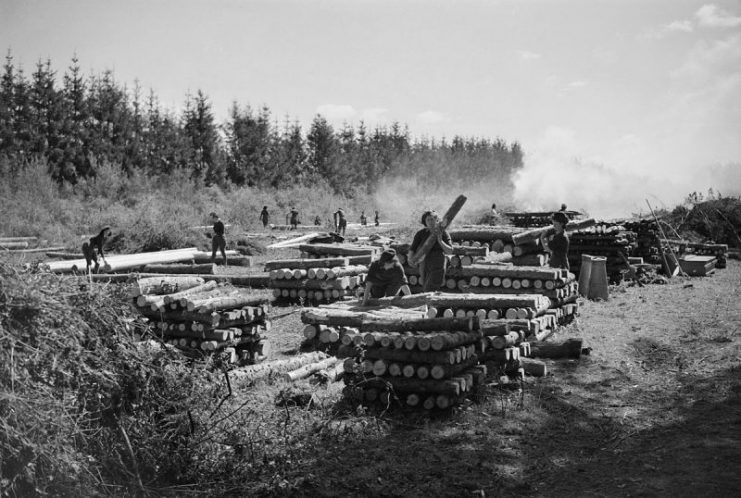
The Land Army continued farming until 1950. At the Land Army’s peak, the UK imported less than half of its food compared to two-thirds before the war. The Timber Corps was disbanded in 1946.
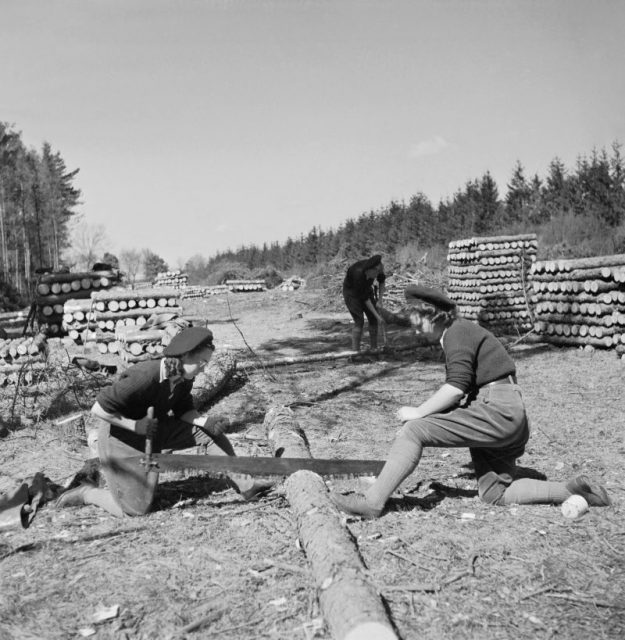
Because the Land Army was not recognized as an equal branch of civilian service, the women who served were not given postwar placement support or payouts to help them readjust to civilian life. Even requests to keep their uniforms as a memento of their service were denied.
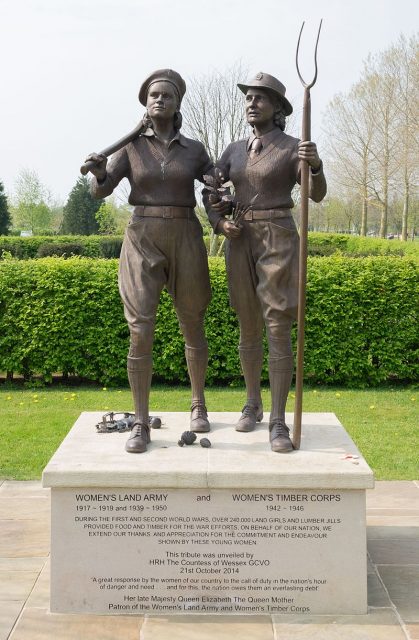
Read another story from us: The Brave Women of the Battle of Britain
Lady Gertrude Denman, the leader of the Women’s Land Army in both world wars, resigned due to the indignities faced by the women who selflessly served their country in both wars.
During the Second World War, the number of women working in British industry increased from 5.5 million to 7.35 million. Nonetheless, by 1951 the number had almost reduced to the same levels seen prior to the war.
